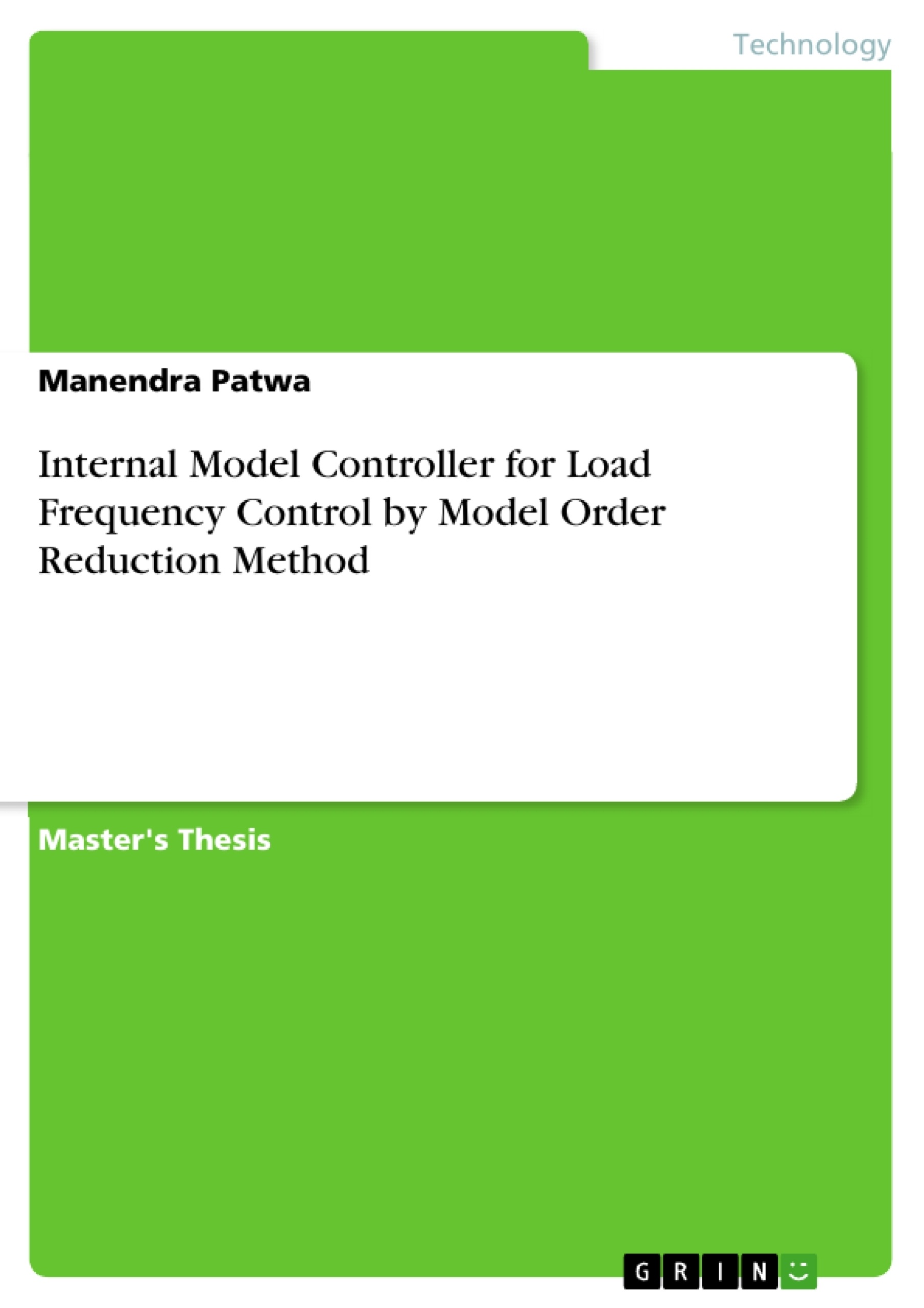In the power system, the load frequency is the major problem in one of those problems occur during the unstable load. In the electrical-power industries, there is an extreme necessity for the efficacious and effectual Load Frequency Control approaches to minimize growing monotonic complex large-scale power systems and their resilience in the face of parameter uncertainty, mismatch of plant model, and external load variation.
So to minimize the problem of load frequency there is a scheme “A two- degree-of-freedom (TDF)-internal model controller (IMC)” for the single region model is designed where the 2nd order reduced-model has been used as a TDF-IMC scheme internal/predictive model. Determining the suitable value of tuning parameter is very much complicated and challenging for TDF-IMC controller design in conventional type two-degree freedom (TDF) - IMC, but now numerous algorithms are proposed by the researchers for optimization.
In this thesis, the modeling and analysis of by reduction method of TDF-IMC is given using MATLAB programming and simulation and comparative study is noted between routh and pade approximation.
Inhaltsverzeichnis (Table of Contents)
- CHAPTER-1
- INTRODUCTION
- PURPOSE OF THESIS
- CHAPTER-2
- LITRATURE REVIEW
- CHAPTER-3
- MODEL ORDER REDUCTION
- PADE APPROXIMATION METHOD
- CHAPTER-4
- LOAD FREQUENCY CONTROL
- DESCRIPTION OF PLANT
- TWO DEGREE FREEDOM - INTERNAL MODEL CONTROL
- PADE APPROXIMATION MODELING
- ROUTH APPROXIMATION MODELING
- NUMERICAL MODEL OF LFC
- CHAPTER-5
- PROGRAM & SIMULATION
- RESULT & DISCUSSION
- CHAPTER-6
- CONCLUSION
- FUTURE SCOPE
- REFERENCES
Zielsetzung und Themenschwerpunkte (Objectives and Key Themes)
This dissertation explores the design and implementation of an internal model controller (IMC) for load frequency control (LFC) in a single area power system. The main objective is to enhance the stability and robustness of LFC systems by effectively addressing the challenges of parameter uncertainty and load variations. The dissertation leverages the model order reduction method to simplify the complex model of the power system and facilitate the design of the TDF-IMC scheme.
- Model Order Reduction for LFC Systems
- TDF-IMC Design and Implementation
- Performance Evaluation of Different Approximation Techniques (Pade and Routh)
- Stability and Robustness Analysis of LFC Systems
- Application of MATLAB for Simulation and Analysis
Zusammenfassung der Kapitel (Chapter Summaries)
Chapter 1 provides a general introduction to the problem of load frequency control in power systems and outlines the purpose and scope of this dissertation. Chapter 2 presents a comprehensive review of existing literature on LFC and related topics, covering key concepts and advancements in the field. Chapter 3 discusses the application of model order reduction techniques, specifically the Pade approximation method, to simplify the complex dynamics of the LFC system. Chapter 4 delves into the design and implementation of the two-degree-of-freedom (TDF)-IMC scheme for LFC, exploring both Pade and Routh approximation methods. Chapter 5 presents the simulation results and a detailed discussion of the performance of the TDF-IMC scheme, comparing the efficacy of different approximation techniques. This chapter also provides insights into the stability and robustness characteristics of the controller design.
Schlüsselwörter (Keywords)
This dissertation primarily focuses on the application of model order reduction techniques, particularly the Pade approximation method, to enhance the performance of load frequency control (LFC) systems. The main keywords and focus topics include TDF-IMC, single area power system, model order reduction, Pade approximation, Routh approximation, stability, robustness, MATLAB simulation, and load frequency control.
- Quote paper
- Manendra Patwa (Author), 2022, Internal Model Controller for Load Frequency Control by Model Order Reduction Method, Munich, GRIN Verlag, https://www.grin.com/document/1284786



